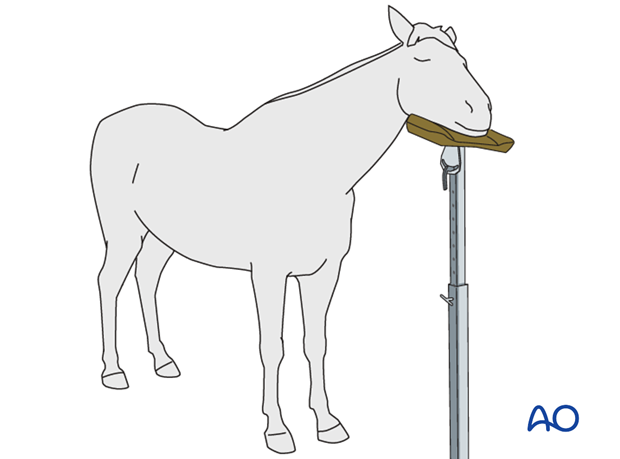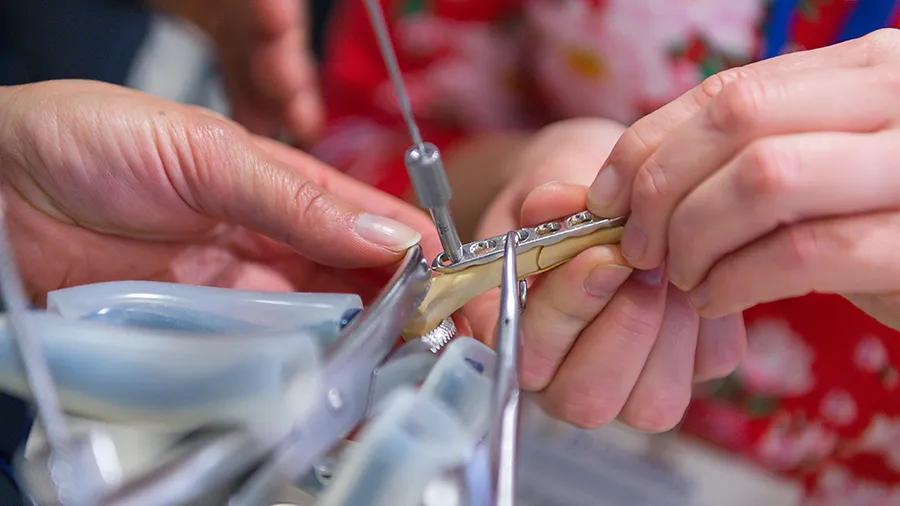Standing
1. Positioning
If the procedure is performed in the standing position, distinct advantages include: reduced hemorrhage, improved visibility, and better access to both sides of the dorsal spinous process(es), all of which facilitate dissection and separation of the muscular attachments.

2. Preparation for surgery
The mane is removed and the surgical field prepared for aseptic surgery.
With the horse sedated, tissues surrounding the affected dorsal spinous processes, sacrum, or coccygeal area are infiltrated with a local anesthetic.













